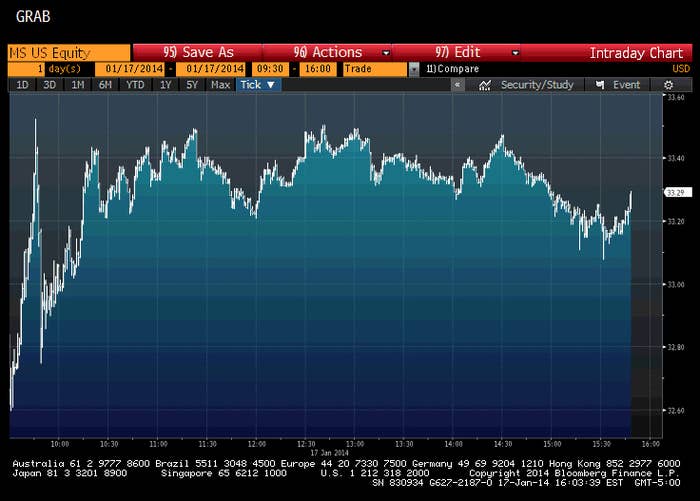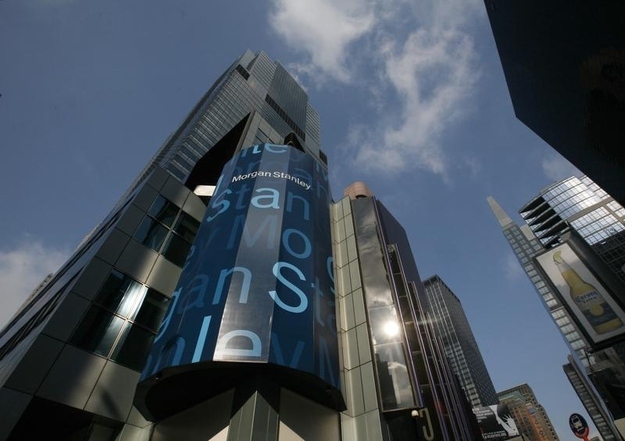
In the fourth quarter, Morgan Stanley's headline numbers showed a 70% dive in profits over the year, thanks to $1.2 billion in legal expenses tied to litigation over mortgage-backed securities from before the financial crisis. The bank's revenue of $7.8 billion, however, was an 11% jump from the year before. And investors were pleased: it's one of the few banks that reported earnings this week that has seen its stock jump up.
Today the stock is up 4%, compared to flat or mild declines among its competitors following their earnings this week. Why? Because investors are seeing a safer, less volatile, transformed bank. "This is the biggest business mix transformation of any of the large banks," said CLSA analyst Mike Mayo.

Exciting trading is down, boring trading is about the same
Morgan Stanley, like every other high-flying investment bank before the financial crisis, had an acute case of "Goldman envy" that manifested itself in trying to achieve massive sales and trading profits, especially in fixed income.
After flirting with destruction during the financial crisis, Morgan Stanley deliberately shifted its business away from volatile, risky trading and sales under the leadership of James Gorman, who took over as CEO in the beginning of 2010. Morgan Stanley saw its trading in fixed income and commodities go down over 14% annually, from $811 million to $694 million and still have a successful quarter.
While fixed income trading revenues were down all over the Street 8% according to Citi analyst Keith Horowitz, Morgan Stanley still underperformed and investors seem entirely unperturbed. According to Bloomberg, Morgan Stanley's share of fixed-income revenue has fallen to its lowest point in four years.
Equity sales and trading, buying and selling stocks for clients, had $1.5 billion in revenue from $1.4 billion a year ago. Equities have traditionally been a backwater for high-flying investment banks: in Michael Lewis's classic Wall Street memoir, "equities in Dallas" is where Lewis's least bright and ambitious peers end up, as opposed to bond trading. For Morgan Stanley, equities in Dallas is turning into a key part of the business model.
Just to show how dramatic the shift is, in the fourth quarter of 2006, equity sales and trading had revenues of $1.4 billion and fixed income revenue was $2.5 billion. "This was an underperforming fixed income quarter and it still well exceeded expectations," said Mike Mayo, an analyst at CLSA, "a quarter like this shows the benefit of derisking and deleveraging."

Wealth and investment management is doing even better than they thought it would.
Morgan Stanley's wealth management division had revenue over $3.7 billion, up almost 8 percent from a year ago. Wealth management alone was just over 47% of the bank's total revenue from the quarter. In 2006, under the leadership of then-CEO John Mack and co-president Zoe Cruz, who would use Goldman as a measuring stick for Morgan, wealth management made up only 18% of the firm's revenue.
More important for investors looking forward, Morgan Stanley reported a pre-tax margin, a measure of profitability of 20% excluding some items, compared to 19% a year ago. Morgan Stanley also upped its margin target for wealth management in a year to between 22% and 25% from 20% to 22%.
Horowitz pointed to Gorman's improved projection as a reason why the stock would likely "slightly outperform today." Steven Chubak, an analyst at Nomura, wrote in an note this morning that the margin expansion would "elicit a positive reaction from investors." And he was right.
